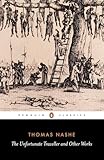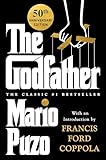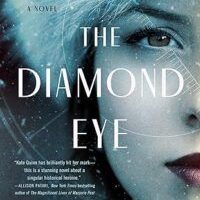“For years the old Italians have been dying/all over America.”
–Lawrence Ferlinghetti
On the second floor of Harvard’s Fogg Museum, in an airy, well-lit, white-walled gallery, near a slender window overlooking a red-bricked Cambridge street, there is a display case holding three portraits on chipped wood not much bigger than post-cards. Of varying degrees of aptitude, the paintings are of a genre called “Fayum Portraits” from the region of Egypt where they’re commonly found. When the Roman ruling class established itself in this Pharaonic land during the first few centuries of the Common Era, they would mummify themselves in the Egyptian fashion while affixing Hellenistic paintings onto the faces of their preserved bodies. Across the extent of the Roman empire, from damp Britain to humid Greece, little of the more malleable painted arts survived, but in sun-baked Egypt these portraits could peer out 20 centuries later as surely as the desert dried out their mummified corpses. When people envision ancient Mediterranean art, they may think of the grand sculptures blanched a pristine white, Trajan’s Arch and the monumental head of Constantine, the colorful paint which once clung to their surfaces long since eroded away. And while the monumental marbles of classical art are what most people remember of the period, the Fayum portraits of Harvard provide an entirely more personal gaze across the millennia.
If white is the color we associate with those sculptures, then the portraits here in Cambridge are of a different hue. They are nut-brown, tanned from the noon-day sun, yellow-green, and olive. Mummy Portrait of a Woman with an Earring, painted in the second century, depicts in egg tempura on wood a dark-skinned middle-aged woman with commanding brown eyes, her black hair showing a bit of curl even as it is pulled back tightly on her scalp; a woman looking out with an assuredness that belies her anonymity over time. Mummy Portraits of a Bearded Man shows the tired look of an old man, grey beard neatly clipped and groomed, his wavy grey hair still with a hint of auburn and combed back into place. Fragments of a Mummy Portrait of a Man represents a far younger man, cleft chinned with a few days’ black stubble over his olive skin. What’s unnerving is the eerie verisimilitude of this nameless trio.
That they look so contemporary, so normal, is part of what’s unsettling. But they also unsettle because they’re there to assist in overturning our conceptions about what Roman people, those citizens of that vast, multicultural, multilingual, multireligious empire, looked like. Our culture is comfortable with the lily-white sculptures we associate with our Roman forebearers which were then imitated in our own imperial capitals; easier to pretend that the ancient Romans had nothing to do with the people who live there now, and yet when looking at the Fayum portraits I’m always struck by how Italian everybody looks.
The old man could be tending tomatoes in a weedy plot somewhere in Trenton; the middle-aged woman wearily volunteering for a church where she’s not too keen on the new Irish priest, and the young man with the stubble looks like he just got off a shift somewhere in Bensonhurst and is texting his friends to see who wants to go into the city. I’ve never seen anyone who actually looks like the statue of Caesar Augustus of Primo Porta carved from white stone, but you’ll see plenty of people who look like the Fayum Portraits in North Boston, Federal Hill, or Bloomfield (the one either in Jersey or in Pittsburgh). When I look at the Fayum portraits, I see people I know; I see my own family.
Despite my surname vowel deficiency, I’m very much Italian-American. Mathematically, twice as much as Robert DeNiro, so I feel well equipped to offer commentary in answering the question with which I’ve titled this piece. Furthermore, as a second-generation American, I’m not that far removed from Ellis Island. My mother’s father immigrated from Abruzzo, that mountainous, bear-dwelling region that was the birthplace of Ovid, and his entire family and much of his fellow villagers were brought over to Westmoreland County, Pennsylvania, to work as stone masons, a trade they’d been plying since the first rock was laid in the Appian Way. My grandmother’s family was from Naples, where Virgil was born, a teeming volcanic metropolis of orange and lemon trees, a heaven populated by devils as native-son Giordano Bruno wrote in the 16th century. For me, being Italian was unconscious; it simply was a fact no more remarkable than my dark hair or brown eyes.
Being Italian meant at least seven fishes on Christmas Eve and the colored lights rather than the white ones on the tree, it meant (and still means) cooking most things with a heavy dollop of olive oil and garlic, it means at least once a week eating either veal parmesan, prosciutto and melon, calamari, spaghetti with tuna, and buffalo mozzarella with tomatoes. Being Italian meant laminated furniture in the homes of extended family, and Mary-on-the-half-shell; it meant a Catholicism more cultural than theological, with the tortured faces of saints vying alongside a certain type of pagan magic. Being Italian meant assumed good looks and a certain ethnic ambiguity; it meant uncles who made their own wine and grew tomatoes in the backyard.

Being Italian-American meant having an identity where the massive pop culture edifice that supplies representations of you implies that the part before the hyphen somehow makes the second half both more and less true. My position was much like Maria Laurino‘s in Were You Always an Italian?: Ancestors and Other Icons of Italian America, where she writes that “All the pieces of my life considered to be ‘Italian’…I kept distinct from the American side, forgetting about the hyphen, about that in-between place where a new culture takes form.” What I do viscerally remember is the strange sense I had watching those corny old sword-and-sandal epics that my middle school Latin teacher used to fill up time with, a sense that those strangely Aryan Romans presented on celluloid were supposed to somehow be related to me. Actors whose chiseled all-American whiteness evoked the marbles that line museum halls. Sculptures of Caesar Augustus were once a lot more olive than white as well. That classical Greek and Roman statuary was vividly painted, only to fade over time, has been known since the 19th century, even as contemporary audiences sometimes violently react to that reality. Using modern technology, archeologist Vinzenz Brinkmann has been able to restore some of the most famous Greek and Roman statues to glorious color, as he details in his Gods in Color: Polychromy in the Ancient World, but as the classicist Sarah Bond writes in Forbes, “Intentional or not, museums present viewers with a false color binary of the ancient world.” We think of the Romans as lily white, but the Fayum portraits demonstrate that they very much weren’t. That the individuals in these pictures should appear so Italian shouldn’t be surprising—Romans are Italians after all. Or at least in the case of the Fayum portraits they’re people from a mélange of backgrounds, including not just Romans, but Greeks, Egyptians, Berbers, Arabs, Jews, Ethiopians, and so on. Rome was, like our own, a hybridized civilization, and it’s marked on the faces that peer out towards us on that wall.
Last fall, at a handful of Boston-area colleges just miles from the museum, classical imagery was appropriated for very different means. Students awoke to find their academic halls papered with posters left during the night by members of one of these fascistic groups to have emerged after the 2016 presidential election, a bigotry that has been revealed as if discovering all of the fungus growing underneath a rotting tree stump that’s been kicked over. This particular group combined images of bleached classical sculpture and neo-fascist slogans to make their white supremacist arguments. The Apollo Belvedere is festooned with the declaration “Our Future Belongs to Us,” 17th-century French Neo-Classical sculptor Nicolas Coustou’s bust of Julius Caesar has “Serve your People” written beneath it, and in the most consciously Trumpy of posters, a close-up on the face of Michelangelo’s David injuncts “Let’s Become Great Again.” There’s something particularly ironic in commandeering the David in the cause of white supremacy. Perhaps they didn’t know that that exemplar of the Italian Renaissance was a depiction of a fierce Jewish king as rendered by a gay, olive-skinned artist?

Such must be the central dilemma of the confused white supremacist, for the desire to use ancient Rome in their cause has been irresistible ever since Benito Mussolini concocted his crackpot system of malice known as fascismo corporativo, but the reality is that the descendants of those very same Romans often don’t appear quite as “white” as those supremacists would be comfortable with. This is especially important when considering that the Romans “did not speak in terms of race, a discourse invented many centuries later,” as scholar Nell Irvin Painter writes in The History of White People. Moral repugnance is a given when it comes to racist ideologies, but one should also never forget the special imbecility that comes along with arguing that you’re innately superior because you kinda, sorta, maybe physically resemble dead people who did important things. What makes the case of the posters more damning is that those who made them don’t even actually look like the people whose culture they’ve appropriated.
No doubt the father of celebrated journalist Gay Talese would be outraged by this filching. In a 1993 piece for The New York Times Book Review, he remembers his “furious and defensive father” exploding after he’d learned that the Protestant-controlled school board had rejected his petition to include Ovid and Dante in the curriculum, the elder man shouting at his son that “‘Italy was giving art to the world when those English were living in caves and painting their faces blue!’” A particular twist as the descendants of those same WASPs paper college campuses with posters of Italian sculptures that they somehow claim patrimony from. But that’s always been the predicament of the Western chauvinist, primed to take ownership over another culture as evidence of his own genius, while simultaneously having to explain his justifications for the disdain in which he holds the actual children of that culture.

Since the late 19th-century arrival of millions of immigrants from the Mezzogiorno, American racists have long contrived baroque justifications for why white Anglo-Saxon Protestants are the inheritors of Italian culture, while Italians themselves are not. Some of this logic was borrowed from Italy itself, where even today, Robert Lumley and Jonathan Morris record in The New History of the Italian South, some northerners will claim that “Europe ends at Naples. Calabria, Sicily, and all the rest belong to Africa.” Northern Italians, comparatively wealthier, better educated, and most importantly fairer, had been in the United States a generation before their southern cousins, and many Anglo-Americans borrowed that racialized animus against southerners which reigned (and still does) in the old country.

 As Richard Gambino writes in Blood of my Blood: The Dilemma of the Italian-Americans, it was in the “twisted logic of bigotry” that these immigrants were “flagrantly ‘un-American.’ And Italians replaced all the earlier immigrant groups as targets of resentment about the competition of cheap labor.” This was the reasoning that claimed that all Italian accomplishments could be attributed to a mythic “Nordic” or “Teutonic” influence, so that any Mediterranean achievements were written away, orienting Rome towards a Europe it was only tangentially related to and away from an Africa that long had an actual influence. Notorious crank Madison Grant in his unabashedly racist 1916 The Passing of the Great Race claimed that Italians were now “storming the Nordic ramparts of the United States and mongrelizing the good old American stock,” with Gambino explaining that “In his crackpot explanation, Italians are the inferior descendants of the slaves who survived when ancient Rome died.”
As Richard Gambino writes in Blood of my Blood: The Dilemma of the Italian-Americans, it was in the “twisted logic of bigotry” that these immigrants were “flagrantly ‘un-American.’ And Italians replaced all the earlier immigrant groups as targets of resentment about the competition of cheap labor.” This was the reasoning that claimed that all Italian accomplishments could be attributed to a mythic “Nordic” or “Teutonic” influence, so that any Mediterranean achievements were written away, orienting Rome towards a Europe it was only tangentially related to and away from an Africa that long had an actual influence. Notorious crank Madison Grant in his unabashedly racist 1916 The Passing of the Great Race claimed that Italians were now “storming the Nordic ramparts of the United States and mongrelizing the good old American stock,” with Gambino explaining that “In his crackpot explanation, Italians are the inferior descendants of the slaves who survived when ancient Rome died.”
Paleontologist Stephen Jay Gould writes that Grant’s book was “the most influential tract of American scientific racism” and Adolf Hitler wrote a letter to the author claiming “The book is my Bible.” A lawyer and eugenicist, Grant’s writings were influential in both the Palmer Raids, a series of unconstitutional police actions directed by the Wilson administration against immigrants suspected of harboring anarchist and communist sympathies, as well as the xenophobic nastiness of the 1924 Johnson-Reed Act which made eastern and southern European immigration slow to a trickle. Incidentally, it was the Johnson-Reed Act that, had it been passed 10 years earlier, would have barred my mother’s father from entering the United States; a law that former Attorney General Jefferson Beauregard Sessions lauded in a 2017 interview with Stephen Bannon, arguing that the banning of immigrants like those in my family “was good for America.”


In Chiaroscuro: Essays of Identity, Helen Barolini writes that “Italian Americans are too easily used as objects of ridicule and scorn,” and while that’s accurate, it’s a rhetoric that has deep and complicated genealogies. Italy has always occupied a strange position in the wider European consciousness. It is simultaneously the birthplace of “Western Civilization,” and an exoticized, impoverished, foreign backwater at the periphery of the continent; the people who first modeled a noxious imperialism, and the subjugated victims of later colonialism. A pithy visual reminder of Italy’s status in early modern Europe can be seen in the German painter Hans Holbein the Younger’s 1533 masterpiece The Ambassadors, which depicts two of the titular profession surrounded by their tools. On a shelf behind them sits a globe. Europe is differentiated from the rest of the world by being an autumnal brown-green, with the exception of two notable regions colored the same hue as Africa—Ireland and Sicily. In Are Italians White?: How Race is Made in America, coedited with Salvatore Salerno, historian Jennifer Guglielmo explains that the “racial oppression of Italians had its root in the racialization of Africans,” something never more evident than in the anti-Italian slur “guinea” with its intimations of Africanness, this implication of racial ambiguity having profound effects on how Italians were understood and how they understood themselves.



In the rhetoric and thought of the era, Italy was somehow paradoxically the genesis of Europe, while also somehow not European. As such, Italians were to be simultaneously emulated and admired, while also reviled and mocked. During that English Renaissance, which was of course a sequel to the original one, books like Baldassare Castiglione’s The Courtier and Niccolò Machiavelli’s The Prince, with their respective paeans to sensuality and duplicity, molded a particular view of Italianness that has long held sway in the English imagination. Consider all of the Shakespeare plays in an imagined Italy: The Taming of the Shrew, Two Gentleman of Verona, Much Ado About Nothing, Romeo and Juliet, Julius Caesar, Titus Andronicus, Othello, Coriolanus, The Winter’s Tale and The Merchant of Venice, not to mention the occasional appearance of Romans in other plays. Shakespeare’s plays, and other icons of the English Renaissance, set a template that never really faded. A simultaneous attraction to and disgust at a people configured as overly emotional, overly sexual, overly flashy, overly corrupt, overly sensual, and with a propensity less cerebral than hormonal. And the criminality.

Long before Mario Puzo or The Sopranos, Renaissance English writers impugned Italians with a particular antisocial perfidy. Such is displayed in Thomas Nash’s 1594 The Unfortunate Traveller: or, the Life of Jack Wilton, which could credibly be called England’s first novel. In that picaresque, the eponymous character perambulates through the Europe of the early 16th century, encountering luminaries like Thomas More, Erasmus, Henry Howard, Martin Luther, and Cornelius Agrippa, and witnessing events like the horrific siege at Munster in the Low Countries. Most of Nash’s narrative, however, takes place in “the Sodom of Italy,” and an English fever dream of that country’s excess settles like a yellow fog. One Englishmen laments that the only lessons that can be learned here are “the art of atheism, the art of epicurizing, the art of whoring, the art of poisoning, the art of sodomitry.”
The narrative circumstances of Nash’s penultimate scene, which reads like Quentin Tarantino, has an Italian nobleman being executed for the violent revenge he took upon his sister’s rapist. On the scaffold, the nobleman declares that “No true Italian but will honor me for it. Revenge is the glory of arms and the highest performance of valor,” and indeed his revenge was of an immaculate quality. He’d first forced his sister’s assailant to abjure God and condemn salvation, and then, satisfied that such blasphemy would surely send his victim to hell, he shot him in the head. A perfect revenge upon not just the body, but the soul. Nash presents such passion as a ritual of decadent Mediterranean vendetta, simultaneously grotesque and inescapably evocative.


From Nash until today there has often been a presumption of vindictive relativist morality on the part of Italians, and it has slurred communities with an assumption of criminality. In the early 20th century sociologists claimed that the dominant Italian ethic was “familial amoralism,” whereby blood relations had precedence over all other social institutions. Nash’s nobleman is the great-grandfather to Michael Corleone in the collective imagination. Do not read this as squeamish sensitivity, I’d never argue that The Godfather, written and directed by Italians, is anything less than an unmitigated masterpiece. Both Puzo’s novel and Francis Ford Coppola’s adaptation are potent investigations of guilt, sin, and evil. I decided not to join the Sons of Italy after I saw how much of their concern was with stereotypes on The Sopranos, which I still regard as among the greatest television dramas of all time. I concur with Bill Tonelli, who in his introduction to The Italian American Reader snarked that “nobody loves those characters better than Italian Americans do,” and yet I recall with a cringe the evaluation of The Godfather given to me by a non-Italian, that the film was about nothing more than “spaghetti and murder.”
Representations of Italianness in popular culture aren’t just Michael Corleone and Tony Soprano, there’s also the weirdly prevalent sitcom stereotype of the lovable, but dumb, hypersexual goombah. I enter into consideration Arthur “The Fonze” Fonzarelli from Happy Days, Tony Micelli from Who’s the Boss?, Vinny Barbarino of Welcome Back Kotter, and of course Friends’ Joey Tribbiani. Once I argued with my students if there was something offensive about The Jersey Shore, finally convincing them of the racialized animus in the series when I queried as to why there had never been an equivalent about badly behaving WASPs called Martha’s Vineyard?
Painter explains that “Italian Americans hovered longer on the fringes of American whiteness,” and so any understanding must take into account that until recently Italians were still inescapably exotic to many Americans. Tonelli writes that “in an era that supposedly values cultural diversity and authenticity, the portrait of Italian Americans is monotonous and observed from a safe distance.” The continued prevalence of these stereotypes is a residual holdover from the reality that Italians are among the last of “ethnics” to “become white.” Tonelli lists the “mobsters, the urban brute, the little old lady shoving a plate of rigatoni under your nose,” declaiming that “it gets to be like a minstrel show after a while.”
Consider Judge Webster Thayer who after the 1921 sham-trial of anarchists Barolomeo Vanzetti and Nicola Sacco would write that although they “may not have committed the crime” attributed to them, they are “nevertheless morally culpable” because they were both enemies of “our existing institutions… the defendant’s ideals are cognate with crime.” Privately, Thayer bragged to a Dartmouth professor, “Did you see what I did to those anarchistic bastards the other day?” As late as 1969, another professor, this one at Yale, felt free to tell a reporter in response to a query about a potential Italian-American New York mayoral candidate that “If Italians aren’t actually an inferior race, they do the best imitation of one I’ve seen.”
But sometime in the
decades after World War II, Italians followed the Irish and Jews into the
country club of whiteness with its carefully circumscribed membership. Guglielmo
explains that initially “Virtually all Italian immigrants [that] arrived in the
United States [did so] without a consciousness about its color line.” Victims
of their birth nation’s rigid social stratification based on complexion and geography,
the new immigrants were largely ignorant of America’s racial history, and thus
were largely immune to the anti-black racism that was prevalent. These
immigrants had no compunction about working and living alongside African
Americans, and often understood themselves to occupy a similar place in
society.

But as Guglielmo explains, by the second and third generation there was an understanding that to be “white meant having the ability to avoid many forms of violence and humiliation, and assured preferential access to citizenship, property, satisfying work, livable wages, decent housing, political power, social status, and a good education, among other privileges.” Political solidarity with black and Hispanic Americans (we forget that Italians are Latinx too) was abandoned in favor of assimilation to the mainstream. Jennifer Gillan writes in the introduction to Growing up Ethnic in America: Contemporary Fiction about Learning to be American that “American have often fought bitter battles over what it means to be American and who exactly get to qualify under the umbrella term,” and towards the end of the 20th century Italians had fought their way into that designation, but they also left many people behind. In the process, a beautiful radical tradition was forgotten, so that we traded Giuseppe Garibaldi for Frank Rizzo, Philly’s racist mayor in the 70s; so that now instead of Sacco and Vanzetti we’re saddled with Antonin Scalia and Rudy Giuliani. As Guglielmo mourns, “Italians were not always white and the loss of this memory is one of the great tragedies of racism in America.”
If there is to be any anecdote, then it must be in words; where literature allows for imaginative possibilities and the complexities of empathy. What is called for is a restitution, or rather a recognition, of an Italian-American literary canon acting as bulwark against both misrepresentations and amnesia. Talese infamously asked if there were no “Italian-American Arthur Millers and Saul Bellows, James Baldwins and Toni Morrisons, Mary McCarthys and Mary Gordons, writing about their ethnic experiences?” There’s an irony to this question, as Italians in the old country would never think to ask where their writers are, the land of Virgil and Dante secure in its literary reputation, with more recent years seeing the celebrated post-modernisms of Italo Calvino, Primo Levi, Dario Fo, and Umberto Eco. In this century, the citizens of Rome, Florence, and Milan face different questions than their cousins in Newark, Hartford, or Providence. Nor do we bemoan a dearth of examples in other fields: that Italians can hit a baseball or throw a punch can be seen in Joe DiMaggio’s homeruns and Rocky Marciano’s slugging; that we can strike a note is heard in Frank Sinatra and Dean Martin; that we can shoot a picture is proven by Coppola, Brian DePalma, and Martin Scorsese.

Yet in the literary arts no equivalent names come up, at least no equivalent names that are thought of as distinctly Italian. Regina Barreca in the introduction to Don’t Tell Mama!: The Penguin Book of Italian American Writing says that there is an endurance of the slur which sees Italians as “deliberately dense, badly educated, and culturally unsophisticated.” By this view the wider culture is fine with the physicality of boxers and baseballs players, the emotion and sensuality of musicians, even the Catholic visual idiom of film as opposed to the Protestant textuality of the written word, so that the “intellectual” pursuits of literature are precluded. She explains that what remains is an “idea of Italian Americans as a people who would never choose to read a book, let alone write one,” though as Baraca stridently declares this is a “set of hazardous concepts [which] cannot simply be outlived; it must be dismantled.”
I make no claims to originating the idea that we must establish an Italian-American literary canon, such has been the mainstay of Italian-American Studies since that field’s origin in the ’70s. This has been the life’s work of scholars like Gambino, Louise DeSalvo, and Fred Gardaphé, not to mention all of the anthology editors I’ve referenced. Tonelli writes that “Our time of genuine suffering at the hands of this bruising country passed more or less unchronicled, by ourselves or anyone else,” yet there are hidden examples of Italian-American voices writing about an experience that goes beyond mafia or guido stereotypes. For many of these critics, the Italian-American literary canon was something that already existed, it was merely a question of being able to recognize what exists beyond the stark black and red cover of The Godfather. Such a task involved the elevation of lost masterpieces like Pietro di Donato’s 1939 proletarian Christ in Concrete , but also a reemphasis on the vowels at the ends of names for authors who are clearly Italian, but are seldom thought of as such.
That Philip Roth is a Jewish author goes without saying, but rarely do we think of the great experimentalist Don DeLillo as an Italian-American author. A restitution of the Italian-American literary canon would ask what precisely is uniquely Italian about a DeLillo? For that matter, what are the Italian-American aesthetics of poets like Lawrence Ferlinghetti, Jay Parini, Diane Di Prima, and Gregory Corso? What can we better say about the Italianness of Gilbert Sorrentino and Richard Russo? Where do we locate the Mezzogiorno in the criticism and scholarship of A. Bartlett Giamatti, Frank Lentricchia, and Camille Paglia? Baraca writes that “Italian Americans live (and have always lived) a life not inherited, but invented,” and everything is to be regained by making a reinvention for ourselves. Furthermore, I’d suggest that the hybridized nature of what it has always meant to be Italian provides a model to avoid the noxious nationalisms that increasingly define our era.
Guglielmo writes that “Throughout the twentieth century, Italian Americans crafted a vocal, visionary, and creative oppositional culture to protest whiteness and build alliances with people of color,” and I’d argue that this empathetic imagination was born out of the pluralistic civilization of which the Italians were descendants. Contrary to pernicious myths of “racial purity,” the Romans were as diverse as Americans are today, drawing not just from Italic peoples like the Umbrians, Sabines, Apulians, and Etruscans, but also from Egyptians, Ethiopians, Berbers, Carthaginians, Phoenicians, Greeks, Anatolians, Gauls, Huns, Dacians, Franks, Teutons, Vandals, Visigoths, Anglo-Saxons, Normans, Iberians, Jews, Arabs, and Celts, among others. A reality quite contrary to the blasphemy of those posters with their stolen Roman images.

Rome was both capital and periphery, a culture that was a circle with no circumference whose center can be everywhere. Christine Palamidessi Moore in her contribution to the Lee Gutkind and Joanna Clapps Herman anthology Our Roots are Deep with Passion: Creative Nonfiction Collects New Essays by Italian American Writers notes that “Italy is a fiction: a country of provinces, dialects, and regions, and historically because of its location, an incorporator of invaders, empires, and bloodlines.” Sitting amidst the Mare Nostrum of its wine-dark sea, Italy has always been at a nexus of Europe, Africa, and Asia, situated between north and south, east and west. Moore explains that the “genuineness of the ethnicity they choose becomes more obscure and questionable because of its mixed origins; however, because it is voluntary, the act of choosing sustains the identity.”
The question then is not “What was Italian America?” but rather “What can Italian America be?” In 1922 W.E.B. DuBois, the first black professor at Harvard, spoke to a group of impoverished Italian immigrants at Chicago’s Hull House. Speaking against the Johnson-Reed Act, DuBois appealed to a spirit of confraternity, arguing that there must be a multiethnic coalition against a “renewal of the Anglo-Saxon cult: the worship of the Nordic totem, the disenfranchisement of Negro, Jew, Irishman, Italian, Hungarian, Asiatic and South Sea Islander.” When DuBois spoke against the “Anglo-Saxon cult” he condemned not actual English people, but rather the fetish that believes only those of British stock can be “true Americans.” When he denounced the “Nordic totem,” he wasn’t castigating actual northern Europeans, but only that system that claims they are worthier than the rest of people. What DuBois condemned was not people, but rather a system that today we’ve taken to calling “white privilege,” and he’s just as correct a century later. The need for DuBois’s coalition has not waned.
Italian-Americans can offer the example of a culture that was always hybridized, always at the nexus of different peoples. Italians have never been all one thing or the other, and that seems to me the best way to be. It’s this liminal nature that’s so valuable, which provides answer to the idolatries of ancestry that are once again emerging in the West (with Italy no exception). DuBois offered a different vision, a coalition of many hues marshaled against the hegemony of any one. When I meet the gaze of the Fayum portraits, I see in their brown eyes an unsettling hopefulness from some 20 centuries ago, looking past my shoulder and just beyond the horizon where perhaps that world may yet exist.
The post What Is Italian America? It’s Complicated appeared first on The Millions.














